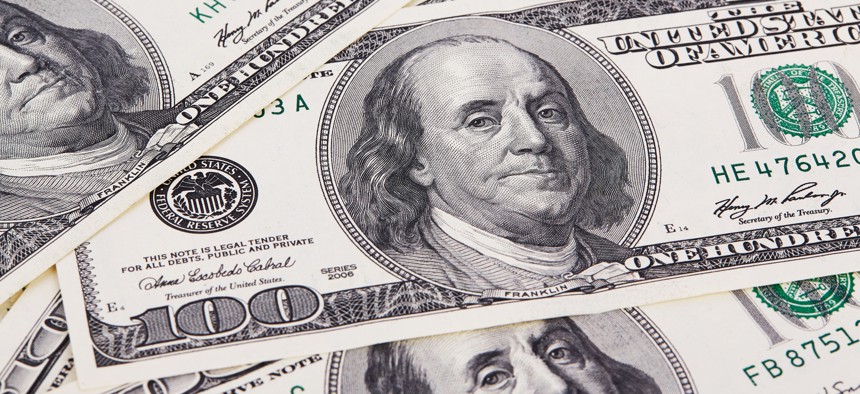How Your Government Agency Can Recoup Millions of Dollars

Getty Images/Yevgen Romanenko
COMMENTARY | Recovering indirect costs from grants and contracts can help refill the general fund, which is under pressure due to rising costs and ongoing needs related to the pandemic.
While many state and local governments are seeing revenue starting to recover, rising costs and ongoing needs stemming from the pandemic have kept the pressure on their general funds.
One way to help alleviate that pressure is the forgotten and misunderstood practice of recouping indirect costs from grants and contracts. By simply examining past grants and making a few calculations, several states, localities and tribal nations have received millions of dollars that can be spent anywhere.
One large western U.S. city, for example, recouped nearly $1.5 million through grant cost recovery. And one of the largest southwestern Native American tribes stands to gain between $8 million to $9 million.
How did they do it?
Indirect costs include items like salary, IT support and facility maintenance across multiple grants. States and local governments can request reimbursement for facilities and administration costs or “costs incurred for a common or joint purpose that benefit more than one purpose and are not readily assignable to the cost objectives specifically benefited to the results achieved,” according to the U.S. Department of Labor Cost & Price Determination Division.
Even better is that these costs can be recouped after they’re issued, almost like an amended tax return.
Yet, very few state and local governments are recouping indirect costs, possibly wasting millions of dollars. Some don’t take on indirect cost recovery because it can be confusing and complicated. Or they simply forget because they are concentrated on current challenges and don’t have the time to go back and figure out what their indirect costs on tens or hundreds of grants would be.
Many are also overlooking that they most likely tapped into their general funds when administering grants and don’t realize the aggregated amount of money they could be leaving on the table. Or they might not remember that you can go back for two years to recoup indirect costs.
Don’t Leave Money on the Table
States, locals and tribes shouldn’t be leaving money on the table. Here is a step-by-step guide on how to recoup indirect costs:
Step One: Get Started Finding Thousands or Millions of Dollars
The first step in recovering indirect costs is to figure out what your indirect cost rate is. To arrive at that rate, state and local governments need to compile a list of indirect costs or the support costs for each of their grants and tally them by grant segments. These costs could be payroll, IT, HR or building costs. They are the costs that were not included in the grant budget, but the support costs needed to operate the grant.
Those with small finance teams or with thousands of grants have turned to consultants to help them dig through the data, with fees paid out of what is recovered.
Categorizing the grants by segments or funders is needed and required. This is typically already done every year with your Schedule of Expenditures of Federal Awards. The reason this is important is because the agency a government unit receives the largest amount of funding from, called the cognizant agency, is the one you negotiate your indirect cost rate with that you will later use for cost recovery purposes.
Step Two: Negotiate Your Rate
Once you’ve identified your largest federal funder then you negotiate your indirect cost rate that you have calculated with them.
For example, the agency could be the U.S. Department of Transportation, the U.S. Department of Housing and Urban Development, Federal Emergency Management Agency or the U. S. Department of Health and Human Services.
The largest funder reviews your request and approves it even though some of the grants may be in different service areas.
Step Three: Apply for Recovery Funds
Once you’ve gained approval from the federal government you will receive a Negotiated Indirect Cost Rate Approval and then you can calculate your returns. Here’s a simplistic example of how these dollars can end up equaling millions:
Say you were awarded a $250,000 grant but only used $100,000 of it. Your indirect cost rate was approved as 30%. Applying that 30% to your $100,000 means your city or state would get $30,000 back on that grant alone. Because you did not fully draw down on your awarded grant then you have remaining funds you can go back and claim with your indirect cost rate. With the 30% rate on the $100,000 you spent, it is determined that you originally subsidized the grant $30,000, so you can now collect that for your general fund.
If you had 33 similar-sized grants and similar utilization rates in your portfolio, you’d receive $1 million back.
Money Flows to General Fund
One of the enduring misunderstandings around cost recovery is that recovered dollars are linked to the initial grant or program. That’s not true. They go right back into the general fund and can be spent on anything.
Make no mistake: Your state or local government did spend money from the general fund to administer grants. Whether you calculate these indirect costs or not, they still exist, potentially even adding up to millions of dollars. At a time when many governments are just starting to recover from pandemic disruptions and trying to provide vital services to citizens in need, can you afford not to be reimbursed for these costs?
Nicolie Lettini is vice president of indirect services at eCivis.
NEXT STORY: Collaboration Provides Effective Approach to State's Human Services





